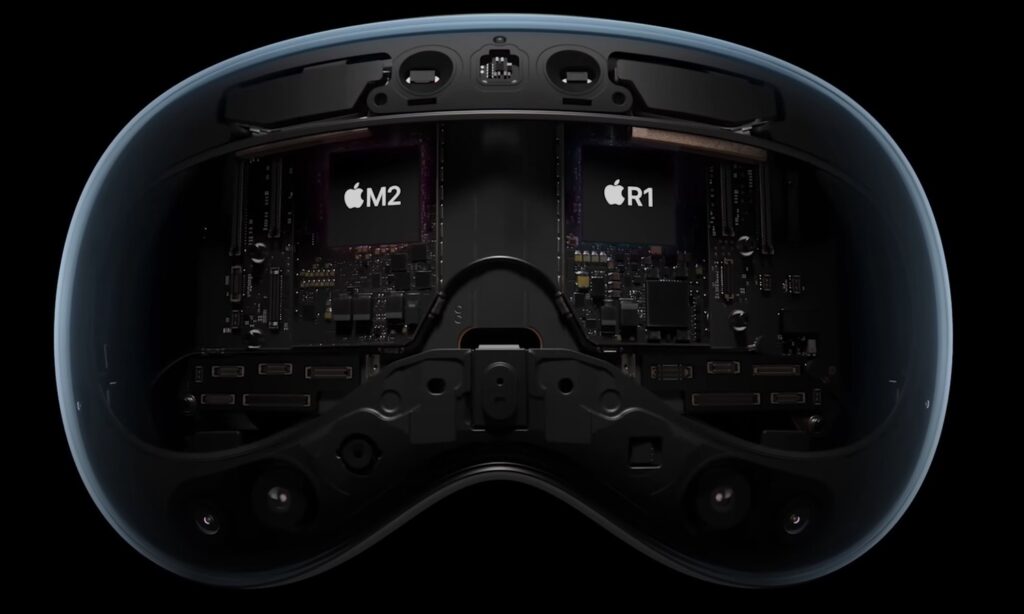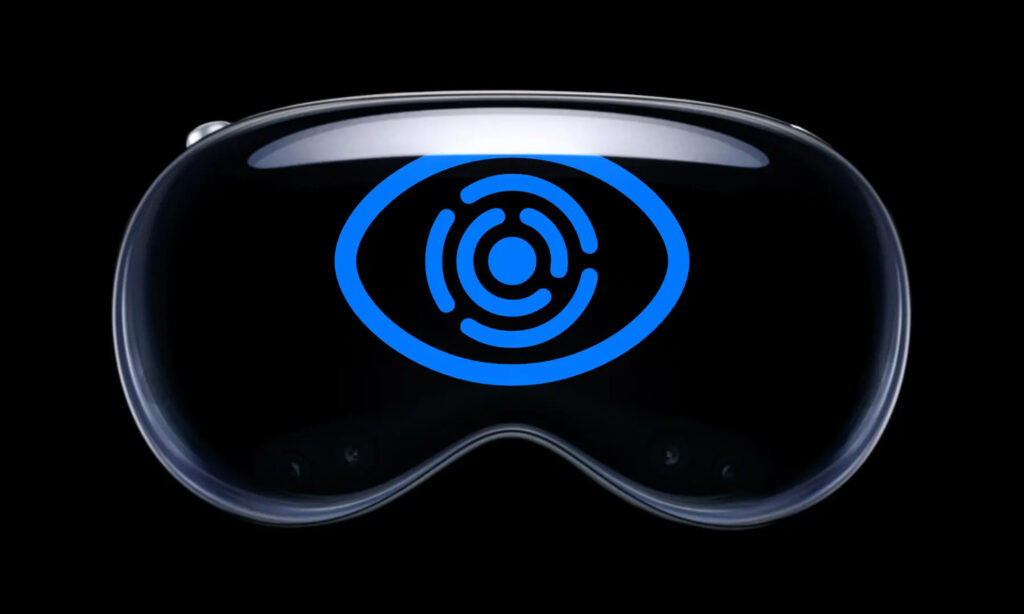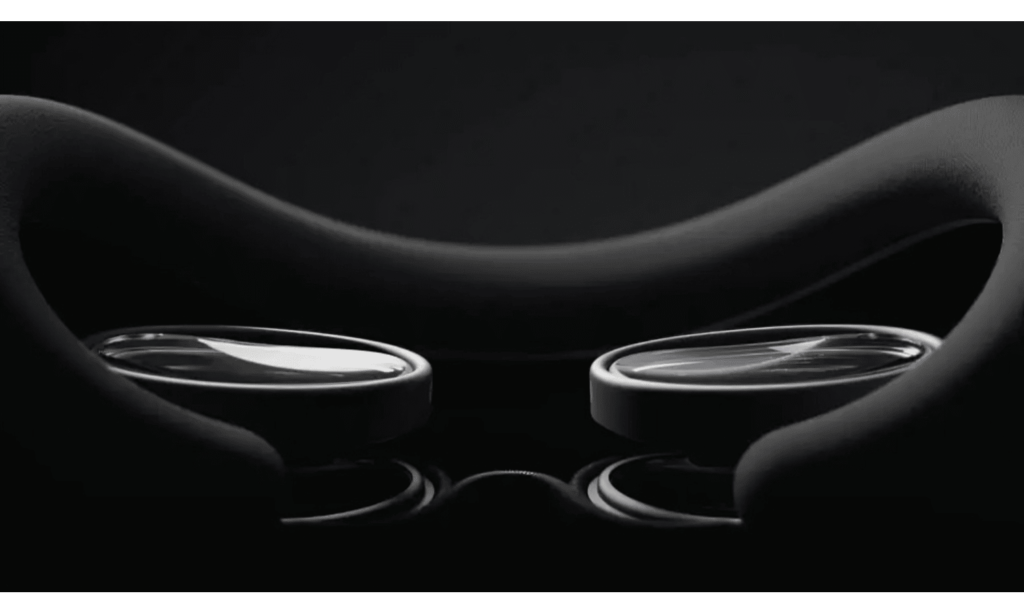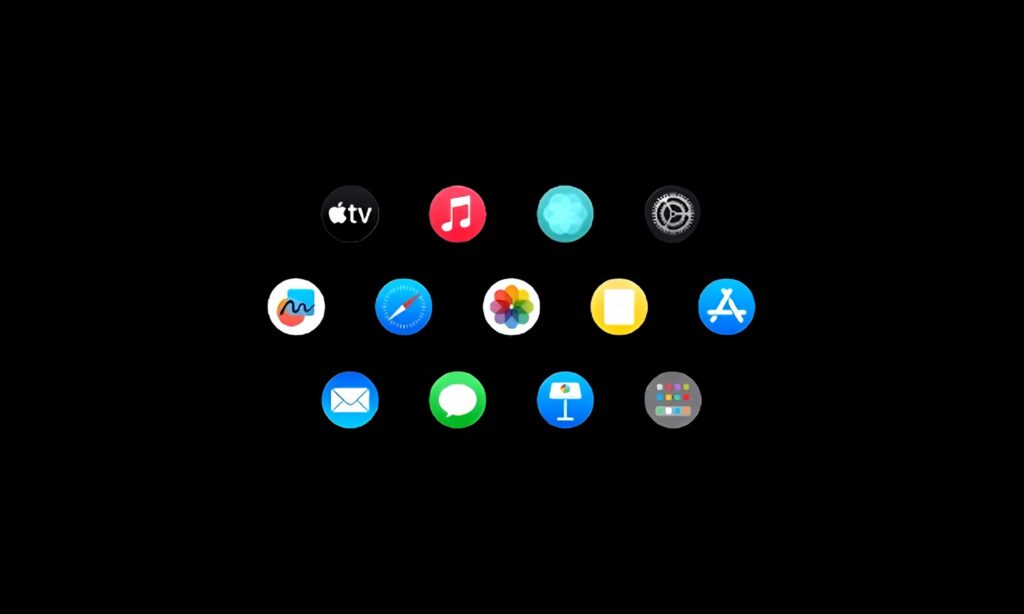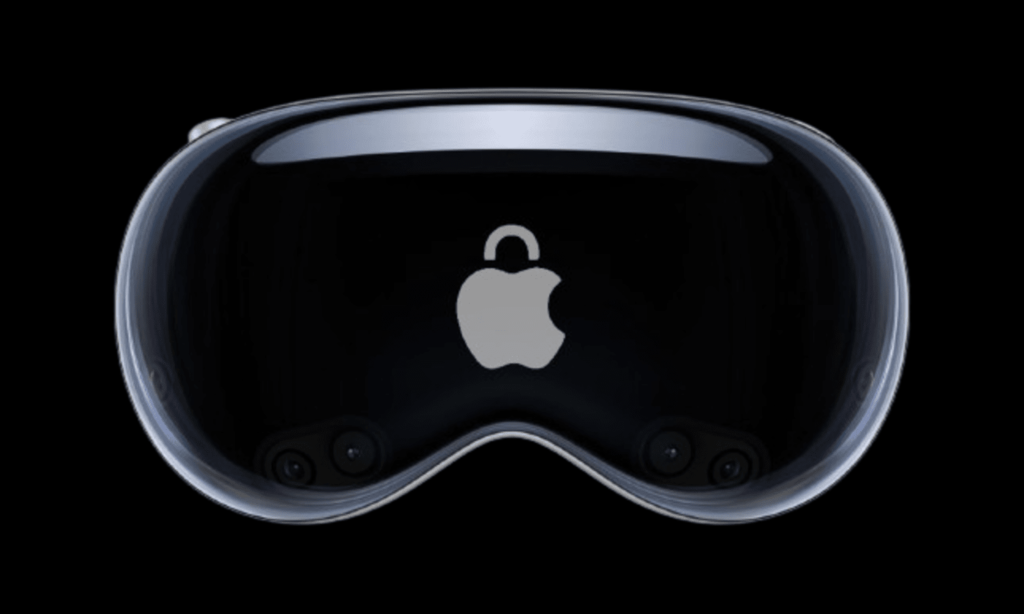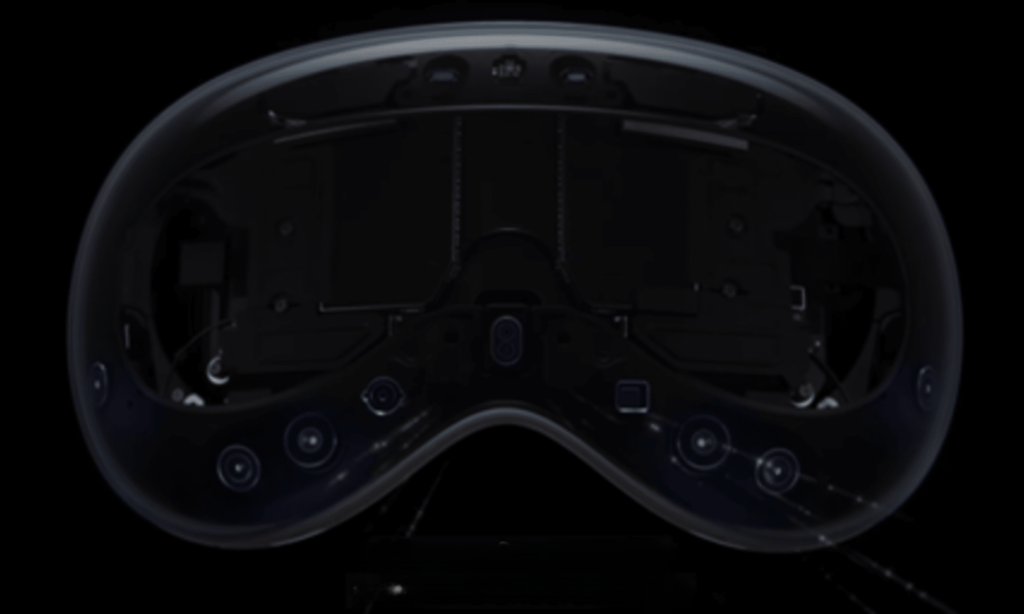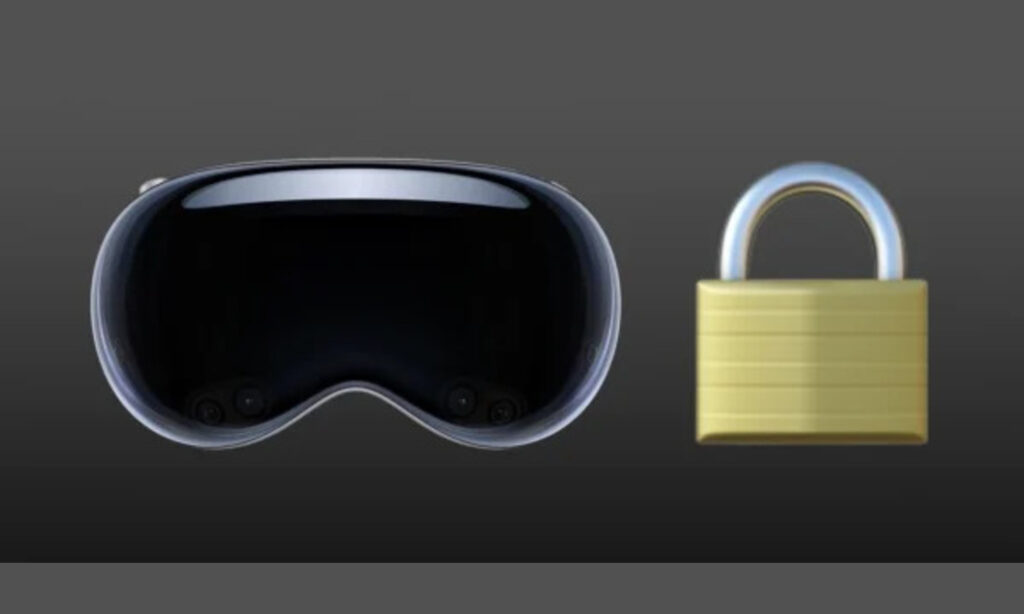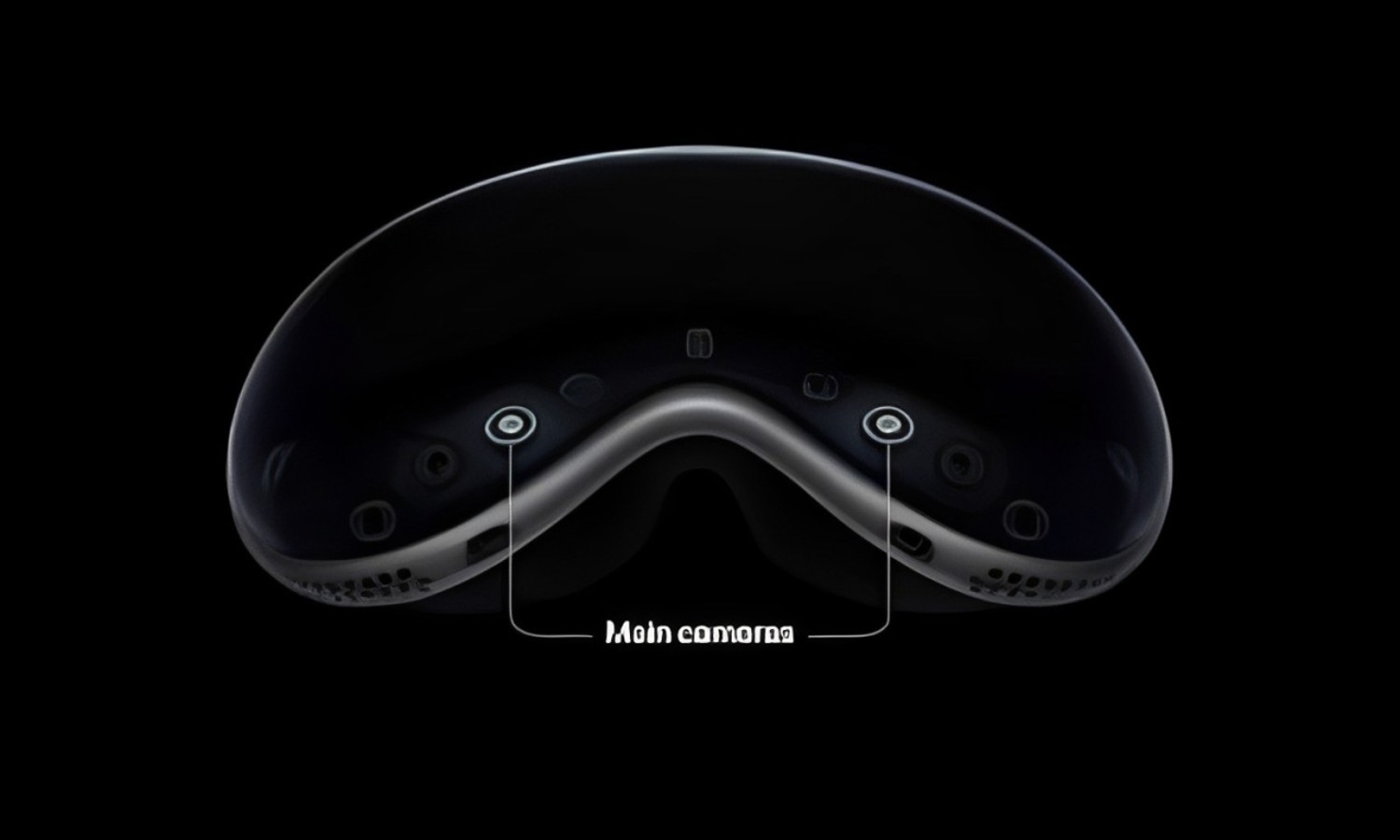“Proximity Sensors” within Apple Vision Pro are advanced technologies that detect the presence and proximity of things in the device’s surroundings. These sensors play an important role in improving the user experience by providing a variety of sophisticated features and functionalities that improve device engagement, security, and convenience. In the context of this immersive gadget, proximity sensors are perfectly integrated into the device’s hardware and software environment, providing consumers with a smooth and intuitive experience.
Understanding Proximity Sensors:
Proximity sensors are a form of sensor technology that detects the presence or absence of items or obstacles within a given distance from the sensor. These sensors detect and correctly measure the proximity of objects using a variety of technologies such as infrared, ultrasonic, and capacitive sensing. In the case of Apple Vision Pro, proximity sensors usually use infrared technology to identify surrounding objects and initiate certain actions or responses within the device.
Functionality within Apple Vision Pro:
Proximity sensors in Apple Vision Pro offer several important tasks, including improved user interaction, security, and convenience across a wide range of applications and settings. They detect surrounding objects or impediments and change the device’s behavior accordingly. In Vision Pro, proximity sensors can be utilized to initiate AR experiences when the device approaches specified objects or surfaces, increasing interaction and context awareness.
Technology:
Proximity sensors detect the presence or absence of items, barriers, or surfaces in their vicinity without requiring physical contact. These sensors use a variety of technologies to determine proximity, including:
- Infrared (IR) Sensors: To identify nearby objects, emit infrared light and then measure its reflection or absorption. IR sensors detect objects based on their reflecting qualities and are widely utilized in proximity detection applications.
- Ultrasonic Sensors: Emit ultrasonic waves and time how long it takes for them to bounce back after hitting an object. Ultrasonic sensors are good at identifying objects at extended distances and are commonly utilized in applications such as parking assistance and robotic object detection.
- Capacitive Sensors: Measure the capacitance changes generated by adjacent objects. Capacitive sensors detect changes in electrical capacitance and are widely utilized in touchscreens, object detection, and proximity sensing applications.
- Inductive Sensors: Detect metallic items by creating an electromagnetic field and measuring the inductance variations produced by the presence of nearby conductive materials. Inductive sensors are commonly employed in industrial automation, proximity sensing, and metal-detecting applications.
Applications:
Proximity sensors have a wide range of applications across sectors and domains, including:
- Automotive: Vehicles use this technology for obstacle detection, parking assistance, collision avoidance systems, and proximity-based lighting control.
- Industrial Automation: Object detection, presence sensing, conveyor belt monitoring, and machine safety applications have been implemented in manufacturing and industrial contexts.
- Consumer Electronics: Touchless gesture control, screen proximity detection, and power-saving technologies are all built into smartphones, tablets, and wearable devices.
- Home Automation: In smart home systems, it is used to regulate lighting depending on proximity, to open and close doors automatically, and to activate smart appliances.
- Healthcare: Medical gadgets and healthcare facilities use touchless interfaces, proximity-based alert systems, and patient monitoring.
- Robotics: Object detection, obstacle avoidance, localization, and navigation are all used in robotic systems and autonomous vehicles.
Advanced Features:
- Display Auto-Off: Proximity sensors allow the device to automatically switch off the display when the user’s face is close to the screen during phone calls or when the device is placed near the user’s ear, thus saving battery life and avoiding inadvertent touches.
- Automatic Brightness Adjustment: By detecting ambient light and the user’s face, proximity sensors allow the device to automatically adjust display brightness for optimal visibility and comfort in a variety of lighting circumstances.
- Gesture Recognition Enhancement: Proximity sensors supplement gesture recognition technology by adding context and input data, improving the accuracy and responsiveness of gesture-based interactions.
- Call Proximity Detection: In phone calls, proximity sensors detect when the device is brought closer to the user’s ear, consequently turning off the display and preventing touch input to avoid inadvertent actions.
- Security Enhancement: Proximity sensors can be used in biometric authentication systems to detect the presence of a user’s face or hand and initiate facial recognition or fingerprint scanning for device unlocking and authentication.
- Adjustable Sensing Range: Many proximity sensors have adjustable detecting ranges, allowing customers to tailor the detection range to their application requirements. This adaptability enables precise and customizable proximity detection in a variety of settings.
- Multi-Mode Operation: Advanced Proximity Sensors may enable several working modes, including presence detection, distance measurement, and gesture recognition. Multi-mode functioning increases the sensor’s versatility and functionality for a variety of applications.
- High Accuracy and Precision: Proximity sensors are intended to give great accuracy and precision in identifying items and obstacles within their sensing range. Advanced signal processing methods and calibration approaches ensure that performance remains consistent under a variety of operating circumstances.
- Fast Response Time: vicinity sensors have quick response times, allowing for real-time detection and response to changes in the vicinity of objects. This rapid response is crucial for applications that require quick reaction times, such as collision avoidance systems and object tracking.
- Robustness and Reliability: Proximity Sensors are designed for toughness and dependability in severe settings, with rugged construction and protected enclosures that can tolerate dust, moisture, vibration, and extreme temperatures. This ensures long-term performance and endurance in harsh industrial and automotive environments.
Specifications:
- Sensor Type: Infrared proximity sensor.
- Detection Range: Adjustable range typically between a few centimeters to several inches. Proximity Sensors have certain detection ranges in which they can detect objects or barriers. The detection range varies by sensor type, technology, and arrangement, ranging from a few millimeters to several meters.
- Output Type: Depending on the application requirements, proximity sensors can have a variety of output types, such as digital, analog, or pulse-width modulation (PWM). Digital outputs give a binary signal of object presence, whereas analog outputs give continuous distance readings.
- Accuracy: High precision in detecting object presence and proximity.
- Operating Voltage: Proximity sensors function within a specific voltage range, which usually ranges from a few volts to several tens of volts. The operating voltage might vary based on sensor technology and design.
- Response Time: Near-instantaneous response time for real-time detection and triggering of actions. Proximity Sensors have quick response times that range from microseconds to milliseconds, depending on the sensor type and application requirements. Fast response times guarantee timely detection and response to changes in object proximity.
- Integration: Seamless integration with the device’s hardware and software, enabling consistent and reliable performance across various scenarios.
- Mounting Options: To assist installation and integration into diverse systems and applications, proximity sensors may provide a variety of mounting choices, such as through-hole mounting, surface mounting, or bracket mounting.
- Power Efficiency: Low power consumption to minimize impact on battery life.
- Privacy Features: Built-in privacy features to ensure user data and interactions are protected and secure.
Ethical Considerations:
- Privacy and Data Security: Proximity sensors can collect and process sensitive information about people’s movements and actions. Protecting user privacy, protecting data transmission and storage, and implementing clear data handling policies are critical for preserving the confidence and ethical use of proximity sensors.
- Bias and Fairness: Bias in Proximity Sensor design, training data, or algorithms can result in unfair or discriminating outputs, especially in applications like automated decision-making or monitoring. Diversity, equity, and fairness in sensor design and deployment are critical for ethical use.
- Informed Consent and User Awareness: Users should be made aware of the presence and purpose of proximity sensors in their environment, as well as the sorts of data collected and how it will be used. Providing clear information, gaining informed consent, and giving users control over sensor functioning are all critical ethical considerations.
- Accessibility and Inclusivity: Proximity Sensors should be accessible and inclusive, catering to users with a wide range of needs, skills, and preferences. Designing sensor interfaces and interactions that are intuitive, adaptive, and configurable guarantees that all users have equal access and participation.
Specific Applications:
- Smartphones and Tablets: Proximity sensors are often used in smartphones and tablets to detect when the device is held close to the user’s ear during a phone call and immediately turn off the display to avoid accidental touches. They are also used to detect when the device is withdrawn from a pocket or bag, which wakes up the screen.
- Industrial Automation: Proximity Sensors are critical components of industrial automation and control systems. They are used to detect the presence or absence of things on conveyor belts, determine the location of machine components, and ensure accurate part alignment in manufacturing operations.
- Automotive Safety Systems: Proximity sensors are critical components of advanced driver assistance systems (ADAS) in vehicles. They are used for parking assistance, blind-spot recognition, collision avoidance, and adaptive cruise control, which improves safety and reduces the chance of accidents on the road.
- Touchless Interfaces: With a growing emphasis on hygiene and touchless interactions, Proximity Sensors are being utilized to develop touchless interfaces in public places such as automatic doors, elevator buttons, and interactive kiosks. They allow users to engage with equipment and interfaces without physically touching them, minimizing the spread of diseases and bacteria.
- Retail and Hospitality: Proximity sensors are utilized in retail and hospitality areas to improve customer engagement and experience. They are used in interactive displays, digital signage, and point-of-sale systems to detect consumer presence and give personalized content or promotions based on proximity.
Emerging Technologies:
- Time-of-Flight (ToF) Sensors: ToF sensors monitor the time it takes for light or sound waves to travel to an object and return to the sensor, allowing for precise distance and proximity detection. ToF sensors provide greater precision and faster response times than standard proximity sensing technologies.
- Millimeter-Wave Radar: Millimeter-wave radar sensors send out high-frequency radio waves and detect their reflections off objects to identify their presence and distance. These sensors are very effective in inclement weather and difficult situations, where other sensing technologies may fail.
- Gesture Recognition: Proximity sensors can be used with gesture recognition technologies to allow for touchless interactions with gadgets and interfaces. Gesture recognition improves user experience and accessibility in a variety of applications by recognizing hand movements and gestures close to sensors.
- 3D Sensing: Advanced Proximity Sensors with 3D sensing capabilities may generate detailed depth maps of the surrounding environment, allowing for precise item detection and spatial awareness. 3D sensing technology is frequently employed in fields such as augmented reality, robotics, and facial recognition.
Implementation Considerations:
- Sensor Placement: The positioning of Proximity Sensors is crucial for maximum performance. Sensors should be strategically placed to cover the necessary detection area while reducing interference from external sources and increasing sensitivity to target objects.
- Calibration and Tuning: Proximity Sensors may require calibration and tweaking to improve their performance in specific applications and situations. Calibration entails modifying sensor characteristics such as sensitivity, threshold levels, and filtering settings to ensure accurate and consistent detection.
- Integration with Control Systems: Proximity Sensors must be coupled with control systems or microcontrollers to process sensor data and take suitable actions based on proximity detection. For optimal performance, sensors and control systems must integrate and communicate seamlessly.
- Power Management: Proximity Sensors should have efficient power management algorithms to reduce energy consumption and increase battery life, especially in battery-powered devices and portable applications. Power-saving features including sleep modes and wake-up triggers help to save energy while the sensor is not in use.
- Testing and Validation: Rigorous testing and validation are required to assure Proximity Sensors’ dependability, precision, and performance in real-world circumstances. Testing should include a variety of operating circumstances, environmental elements, and potential edge cases to discover and address any problems or restrictions.
Challenges:
- Interference and False Triggers: Proximity External sources like electromagnetic fields or ambient light might interfere with sensors, resulting in false triggers or erroneous data. Shielding, filtering, and calibrating procedures are used to reduce interference and increase sensor accuracy.
- Environmental Conditions: Extreme temperatures, humidity, and pollutants can all have an impact on the performance and reliability of proximity sensors. Ensuring robust design and preventive measures is critical for preserving sensor functionality in harsh settings.
- Range Limitations: Proximity Sensors have finite detection ranges, and detecting items outside of this range may be challenging. Extending the detection range while preserving accuracy and reliability necessitates careful tuning of sensor settings and signal processing methods.
- Power Consumption: Proximity Sensors can waste a lot of power, especially in active sensing modes like continuous monitoring and frequent updates. Optimizing power consumption while retaining appropriate performance is critical for battery-powered gadgets and energy-saving solutions.
Future Trends:
- Miniaturization and Integration: Future proximity sensors are predicted to be smaller, more compact, and incorporated into smaller form factors, allowing for seamless integration into portable, wearable, and IoT devices.
- Advanced Sensing Technologies: Emerging sensing technologies, such as millimeter-wave radar, LiDAR, and time-of-flight (ToF) photography, are predicted to improve the capabilities and performance of proximity sensors, allowing for greater precision, longer detection ranges, and more precise object detection.
- AI and Machine Learning Integration: The incorporation of AI and machine learning algorithms into proximity sensors will enable advanced features like context-aware sensing, anomaly detection, and predictive analytics. These characteristics will increase the intelligence and adaptability of proximity sensors in a variety of applications.
- Multimodal Sensing: Future proximity sensors may use various sensing modalities, such as infrared, ultrasonic, and capacitive sensing, to give complementary information and increase overall detection performance in difficult settings.
In a nutshell, proximity sensors in Apple Vision Pro are a critical technology that improves user interaction, security, and convenience in a variety of settings. These sensors identify the presence and proximity of objects, allowing the device to perform actions such as display auto-off during phone conversations, automatic brightness adjustment, gesture recognition enhancement, call proximity detection, and security enhancement via biometric authentication. With its high precision, fast response time, and seamless integration, proximity sensors allow users to connect with their devices smoothly and naturally, setting new benchmarks for user experience and convenience in the modern era of mobile computing. As Apple continues to innovate and push the limits of technology, proximity sensors remain an important part of its vision for the future of mobile devices and interaction.
